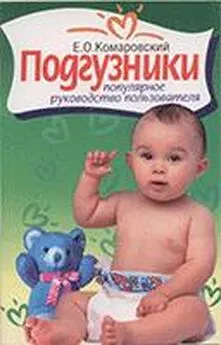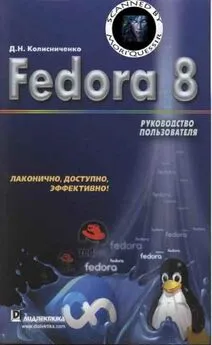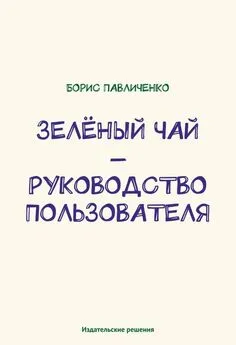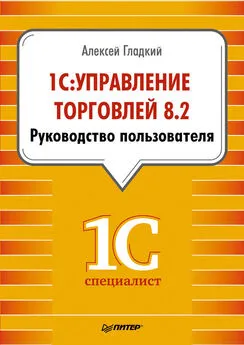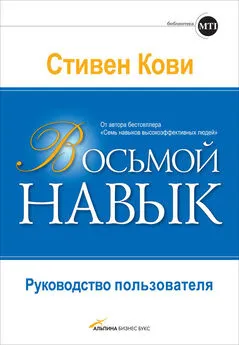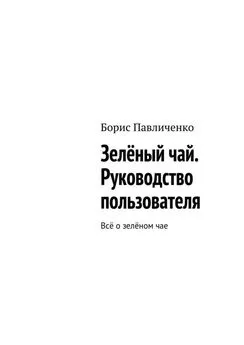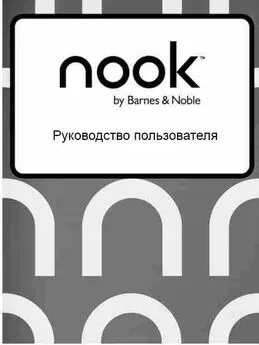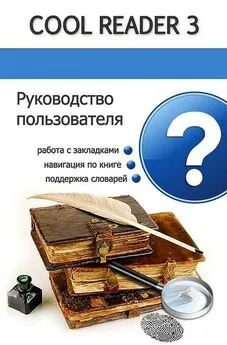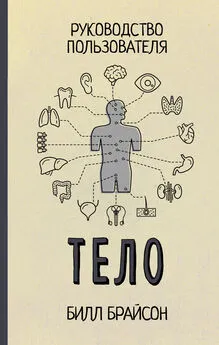Кристи Фанк - Грудь. Руководство пользователя [litres]
- Название:Грудь. Руководство пользователя [litres]
- Автор:
- Жанр:
- Издательство:Литагент 5 редакция «БОМБОРА»
- Год:2020
- Город:Москва
- ISBN:978-5-04-108737-1
- Рейтинг:
- Избранное:Добавить в избранное
-
Отзывы:
-
Ваша оценка:
Кристи Фанк - Грудь. Руководство пользователя [litres] краткое содержание
Грудь. Руководство пользователя [litres] - читать онлайн бесплатно ознакомительный отрывок
Интервал:
Закладка:
134
U. Veronesi et al., “Randomized Trial of Fenretinide to Prevent Second Breast Malignancy in Women with Early Breast Cancer,” Journal of the National Cancer Institute 91, no. 21 (November 1999): 1847–1856.
135
S. Gandini et al., “Meta-analysis of Studies on Breast Cancer Risk and Diet: The Role of Fruit and Vegetable Consumption and the Intake of Associated Micronutrients,” European Journal of Cancer 36, no. 5 (March 2000): 636–646.
136
S. M. Zhang et al., “Plasma Folate, Vitamin B6, Vitamin B12, Homocysteine, and Risk of Breast Cancer,” Journal of the National Cancer Institute 95, no. 5 (March 2003): 373–380.
137
S. Gandini, “Meta-analysis of Studies on Breast Cancer Risk and Diet: The Role of Fruit and Vegetable Consumption and the Intake of Associated Micronutrients,” European Journal of Cancer 36, no. 5 (March 2000): 636–646.
138
M. S. Donaldson, “Metabolic Vitamin B12 Status on a Mostly Raw Vegan Diet with Follow-up Using Tablets, Nutritional Yeast, or Probiotic Supplements,” Annals of Nutrition and Metabolism 44, no. 5–6 (2000): 229–234.
139
S. J. P. M. Eussen et al., “Oral Cyanocobalamin Supplementation in Older People with Vitamin B12 Deficiency: A Dose-Finding Trial,” Archives of Internal Medicine 165, no. 10 (2005): 1167–1172.
140
A. J. L. Cooper, “Biochemistry of Sulfur-Containing Amino Acids,” Annual Review of Biochemistry 52 (1983): 187–222; J. D. Hayes and L. I. McLellan, “Glutathione and Glutathione-Dependent Enzymes Represent a Co-ordinately Regulated Defence against Oxidative Stress,” Free Radical Research 31 (1999): 273–300.
141
S. M. Zhang et al., “Plasma Folate, Vitamin B6, Vitamin B12, Homocysteine, and Risk of Breast Cancer,” Journal of the National Cancer Institute 95, no. 5 (2003): 373–380.
142
J. K. Song and J. M. Bae, “Citrus Fruit Intake and Breast Cancer Risk: A Quantitative Systematic Review,” Journal of Breast Cancer 16, no. 1 (2013): 72–76.
143
G. R. Howe et al., “Dietary Factors and Risk of Breast Cancer: Combined Analysis of 12 Case-Control Studies,” Journal of the National Cancer Institute 82, no. 7 (1990): 561–569.
144
K. Robien, G. J. Cutler, and D. Lazovich, “Vitamin D Intake and Breast Cancer Risk in Postmenopausal Women: The Iowa Women’s Health Study,” Cancer Causes and Control 18, no. 7 (September 2007): 775–782.
145
C. F. Garland et al., “Vitamin D and Prevention of Breast Cancer: Pooled Analysis,” Journal of Steroid Biochemistry and Molecular Biology 103, nos. 3–5 (March 2007): 708–711.
146
S. B. Mohr et al., “Meta-analysis of Vitamin D Sufficiency for Improving Survival of Patients with Breast Cancer,” AntiCancer Research 34, no. 3 (2014): 1163–1166.
147
C. F. Garland et al., “Vitamin D and Prevention of Breast Cancer: Pooled Analysis,” Journal of Steroid Biochemistry and Molecular Biology 103, nos. 3–5 (March 2007): 708–711.
148
C. F. Garland et al., “Vitamin D Supplement Doses and Serum 25-Hydroxyvitamin D in the Range Associated with Cancer Prevention,” AntiCancer Research 31, no. 2 (2011): 607–611.
149
E. Kesse-Guyot et al., “Dairy Products, Calcium, and the Risk of Breast Cancer: Results of the French SU.VI.MAX Prospective Study,” Annals of Nutrition and Metabolism 51, no. 2 (2007): 139–145; M. L. McCullough et al., “Dairy, Calcium, and Vitamin D Intake and Postmenopausal Breast Cancer Risk in the Cancer Prevention Study II Nutrition Cohort,” Cancer Epidemiology, Biomarkers and Prevention 14, no. 12 (December 2005): 2898–2904.
150
P. W. Parodi, “Dairy Product Consumption and the Risk of Breast Cancer,” Journal of the American College of Nutrition 24 (2005): 556S–5568S; Y. Cui and T. E. Rohan, “Vitamin D, Calcium, and Breast Cancer Risk: A Review,” Cancer Epidemiology, Biomarkers and Prevention 15, no. 8 (2006): 1427–1437.
151
B. C. Davis and P. M. Kris-Etherton, “Achieving Optimal Essential Fatty Acid Status in Vegetarians: Current Knowledge and Practical Implications,” The American Journal of Clinical Nutrition 78, no. 3 (2003): 640S–646S.
152
E. D. Rosen and B. M. Spiegelman, “What We Talk about When We Talk about Fat,” Cell 156, no. 1 (2014): 20–44.
153
M. Khodarahmi and L. Azadbakht, “The Association Between Different Kinds of Fat Intake and Breast Cancer Risk in Women,” International Journal of Preventive Medicine 5, no. 1 (2014): 6–15.
154
S. Sieri et al., “Dietary Fat Intake and Development of Specific Breast Cancer Subtypes,” Journal of the National Cancer Institute 106, no. 5 (2014): dju068.
155
Y. Liu et al., “Adolescent Dietary Fiber, Vegetable Fat, Vegetable Protein, and Nut Intakes and Breast Cancer Risk,” Breast Cancer Research and Treatment 145, no. 2 (2014): 461–470; G. A. Colditz, K. Bohlke, and C. S. Berkey, “Breast Cancer Risk Accumulation Starts Early: Prevention Must Also,” Breast Cancer Research and Treatment 145, no. 3 (2014): 567–579.
156
A. L. Frazier et al., “Adolescent Diet and Risk of Breast Cancer,” Cancer Causes and Control 15, no. 1 (February 2004): 73–82.
157
A. I. Smeds et al., “Quantification of a Broad Spectrum of Lignans in Cereals, Oilseeds, and Nuts,” Journal of Agricultural and Food Chemistry 55, no. 4 (2007): 1337–1346.
158
L. B. Kardono et al., “Cytotoxic Constituents of the Bark of Plumeria Rubra Collected in Indonesia,” Journal of Natural Products 53 (1990): 1447–1455; T. Hirano et al., “Antiproliferative Activity of Mammalian Lignan Derivatives against the Human Breast Carcinoma Cell Line, ZR-75–1,” Cancer Investigation 8 (1990): 592–602; M. Serraino and L. U. Thompson, “The Effect of Flaxseed Supplementation on Early Risk Markers for Mammary Carcinogenesis,” Cancer Letters 60 (1991): 135–142; L. U. Thompson et al., “Antitumorigenic Effect of a Mammalian Lignan Precursor from Flaxseed,” Nutrition and Cancer 26, no. 2 (1996): 159–165; C. Wang et al., “Lignans and Flavonoids Inhibit Aromatase Enzyme in Human Preadipocytes,” Journal of Steroid Biochemistry and Molecular Biology 50, nos. 3–4 (1994): 205–212; H. Adlercreutz et al., “Dietary Phytoestrogens and Cancer: In Vitro and In Vivo Studies,” Journal of Steroid Biochemistry and Molecular Biology 41, nos. 3–8 (1992): 331–337.
159
C. J. Fabian et al., “Reduction in Ki-67 in Benign Breast Tissue of High-risk Premenopausal Women with the SERM Acolbifene,” Journal of Clinical Oncology 30, no. 15 (2012): 520.
160
H. L. Newmark, “Squalene, Olive Oil, and Cancer Risk: Review and Hypothesis,” Annals of the New York Academy of Sciences 889, no. 1 (1999): 193–203.
161
G. K. Beauchamp et al., “Phytochemistry: Ibuprofen-like Activity in Extra-Virgin Olive Oil,” Nature 437, no. 7055 (2005): 45–46.
162
L. Bozzetto et al., “Extra-Virgin Olive Oil Reduces Glycemic Response to a High-Glycemic Index Meal in Patients with Type 1 Diabetes: A Randomized Controlled Trial,” Diabetes Care 39, no. 4 (2016): 518–524.
163
A. Trichopoulou et al., “Consumption of Olive Oil and Specific Food Groups in Relation to Breast Cancer Risk in Greece,” Journal of the National Cancer Institute 87, no. 2 (1995): 110–116; J. M. Martin‐Moreno et al., “Dietary Fat, Olive Oil Intake and Breast Cancer Risk,” International Journal of Cancer 58, no. 6 (1994): 774–780; L. Lipworth et al., “Olive Oil and Human Cancer: An Assessment of the Evidence,” Preventive Medicine 26, no. 2 (1997): 181–190.
164
E. Toledo et al., “Mediterranean Diet and Invasive Breast Cancer Risk among Women at High Cardiovascular Risk in the PREDIMED Trial: A Randomized Clinical Trial,” Journal of the American Medical Association Internal Medicine 14 (September 2015).
165
C. Razquin et al., “A 3 Years Follow-up of a Mediterranean Diet Rich in Virgin Olive Oil is Associated with High Plasma Antioxidant Capacity and Reduced Body Weight Gain,” European Journal of Clinical Nutrition 63, no. 12 (2009): 1387–1393.
166
M. Ni, Secrets of Longevity (San Francisco: Chronicle Books, 2006).
167
M. R. Sartippour et al., “Green Tea and Its Catechins Inhibit Breast Cancer Xenografts,” Nutrition and Cancer 40, no. 2 (2001): 149–156; S. F. Eddy, S. E. Kane, and G. E. Sonenshein, “Trastuzumab-Resistant HER2-Driven Breast Cancer Cells Are Sensitive to Epigallocatechin-3 Gallate,” Cancer Research 67, no. 19 (2007): 9018–9023.
168
A. Büyükbalci, “Determination of In Vitro Antidiabetic Effects, Antioxidant Activities, and Phenol Contents of Some Herbal Teas,” Plant Foods for Human Nutrition 63, no. 1 (March 2008): 27–33.
169
M. Inoue et al., “Regular Consumption of Green Tea and the Risk of Breast Cancer Recurrence: Follow-up Study from the Hospital-Based Epidemiologic Research Program at Aichi Cancer Center (HERPACC), Japan,” Cancer Letters 167, no. 2 (June 2001): 175–182.
170
A. H. Wu et al., “Green Tea and Risk of Breast Cancer in Asian Americans,” International Journal of Cancer 106, no. 4 (September 2003): 574–579.
171
A. A. Ogunleye, F. Xue, and K. B. Michels, “Green Tea Consumption and Breast Cancer Risk or Recurrence: A Meta-analysis,” Breast Cancer Research and Treatment 119, no. 2 (2010): 477–484.
172
M. Inoue et al., “Regular Consumption of Green Tea and the Risk of Breast Cancer Recurrence: Follow-up Study from the Hospital-Based Epidemiologic Research Program at Aichi Cancer Center (HERPACC), Japan,” Cancer Letters 167, no. 2 (June 2001): 175–182.
173
K. Nakachi et al., “Influence of Drinking Green Tea on Breast Cancer Malignancy among Japanese Patients,” Japanese Journal of Cancer Research 89, no. 3 (1998): 254–261.
174
S. Pianetti et al., “Green Tea Polyphenol Epigallocatechin-3 Gallate Inhibits Her-2/neu Signaling, Proliferation, and Transformed Phenotype of Breast Cancer Cells,” Cancer Research 62, no. 3 (2002): 652–655.
175
J. Jankun et al., “Why Drinking Green Tea Could Prevent Cancer,” Nature 387, no. 6633 (1997): 561.
Читать дальшеИнтервал:
Закладка:
![Обложка книги Кристи Фанк - Грудь. Руководство пользователя [litres]](/books/1062698/kristi-fank-grud-rukovodstvo-polzovatelya-litre.webp)
